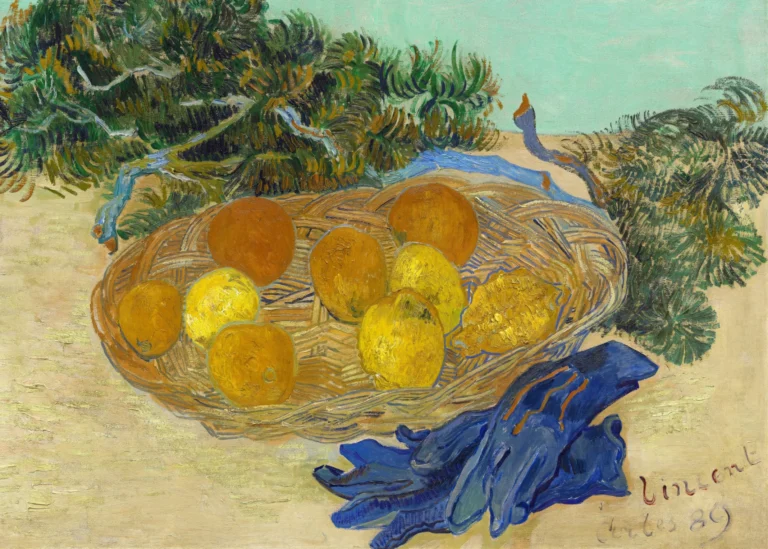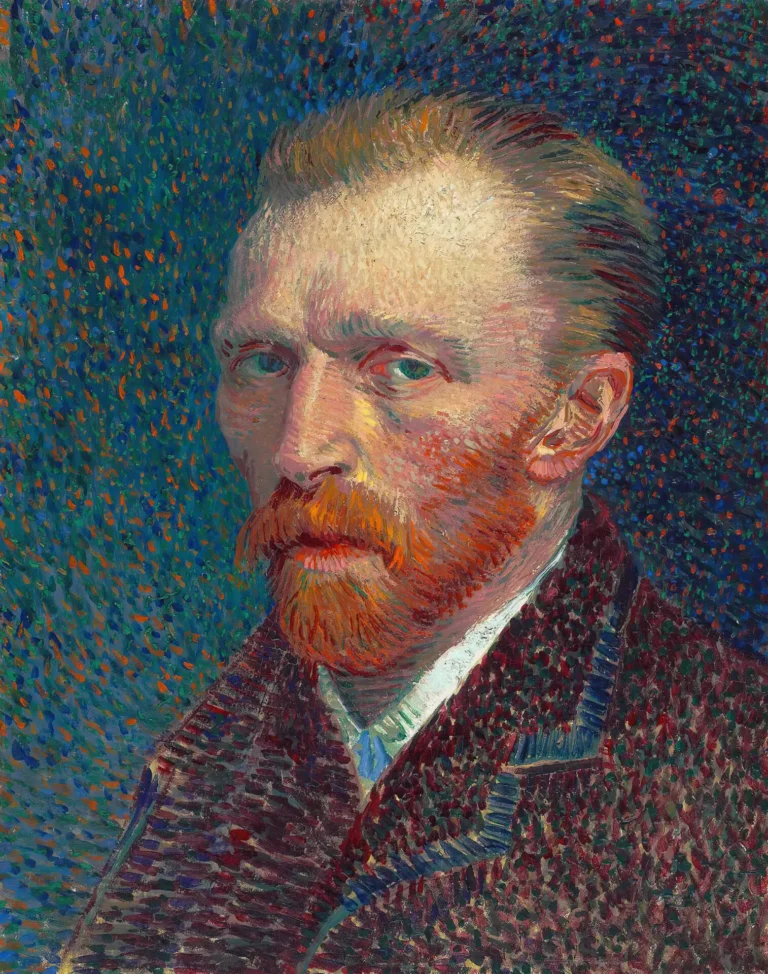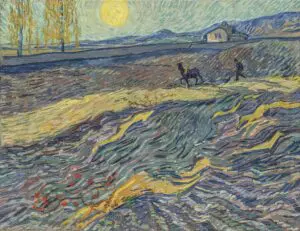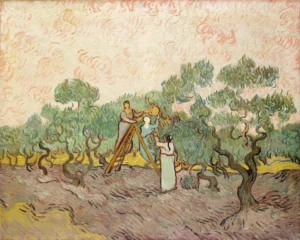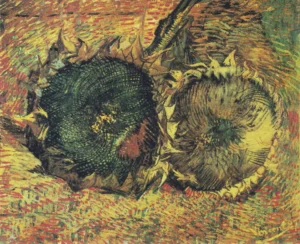Still Life Of Oranges And Lemons With Blue Gloves (1889)
This captivating still life, painted shortly after Van Gogh's return from hospitalization, features a striking composition of oranges and lemons arranged in a basket, against a dark backdrop adorned with spiky cypress branches. The cobalt-blue garden gloves in the foreground add a fashionable touch. Van Gogh's expressive style and meticulous attention to detail manifest in the textures and colors of the fruits and the surrounding elements, symbolizing both beauty and emotional struggle.
Year 1889
About the Artwork
The creation of Still Life of Oranges and Lemons with Blue Gloves holds deep personal significance for Vincent van Gogh, who painted it in 1889 after being released from a mental health institution. The anguish of his separation from fellow artist Paul Gauguin and the emotional strain from the departure of friend Joseph Roulin deeply influenced this work. In a bid to re-establish himself and find financial stability through his art, Van Gogh crafted this still life with an engaging arrangement of citrus fruits and garden gloves. Each stroke captures his unique grasp of color and form, a reflection of his mental state during a trying period. The painting ultimately crossed into the hands of notable collectors and was donated to the National Gallery of Art, ensuring its legacy and appreciation in the art world.
Did You Know
Liked what you see? Add it to your collection.
Enjoyed reading? Share it.
... continued
Creation Context
Van Gogh painted this still life shortly after his release from the hospital, where he was recovering from the tumultuous period following Paul Gauguin's departure from Arles. During this time, he was also concerned about making money through the sale of his paintings, which likely influenced his choice of subject matter.
Composition and Elements
The painting features nine oranges and lemons arranged in a shallow wicker basket, set against a backdrop of dark green, spiky cypress branches. A pair of cobalt-blue garden gloves is prominently placed in the foreground. Van Gogh was drawn to the shapes, hues, and textures of the citrus fruits, the weave of the basket, and the spiky branches. The inclusion of the blue gloves added an 'air of chic' to the painting, as mentioned in his letter to his brother Theo.
Artistic Style
The painting showcases Van Gogh's distinctive use of color and expressive paint application. He meticulously captured the details of the fruits' skin, the branches' spiky needles, and the limp material of the worn gloves. This attention to detail highlights his original sense of color and richly expressive painting style.
Personal Significance
In the letter to Theo where he mentions this painting, Van Gogh also discusses the melancholic departure of his friend Joseph Roulin, who was leaving for a new post in Marseilles. This period was emotionally challenging for Van Gogh, who would soon experience another mental breakdown and return to the hospital.
Ownership and Legacy
The painting was purchased by Rachel 'Bunny' Mellon and her husband Paul Mellon in 1962. Bunny Mellon, an avid horticulturalist and landscape designer, likely appreciated the painting's themes of pruning and fruit gathering. The painting remained in their home until Paul Mellon donated it to the National Gallery of Art in 1999. It remained with Bunny Mellon until her death in 2014.





